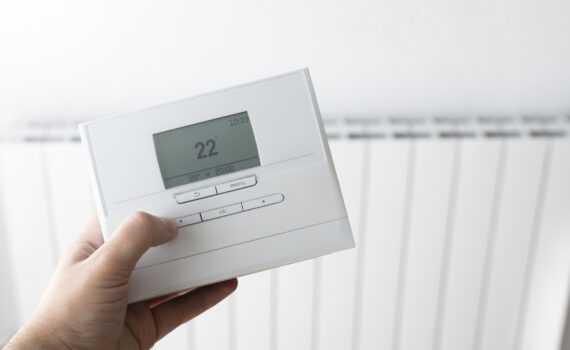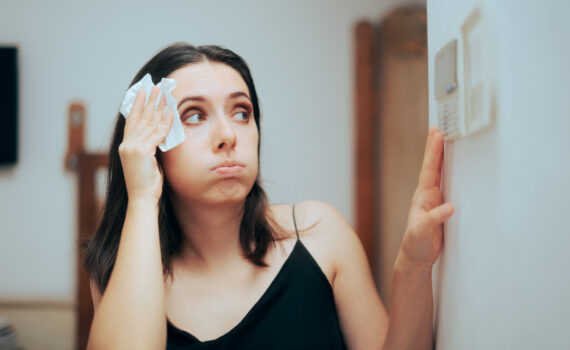
What are the Different Types of Thermostats?
Just about everyone knows what a thermostat is. They sit on the wall, usually in the living room or family room (unless you have a huge house that’s divided into zones, but that’s another story, and allows you to control the temperature in your home. You can set a thermostat to whatever temperature you prefer, turn on your air conditioning or furnace, and then let the thermostat do its thing as it controls the HVAC system.
Knowing what a thermostat is and what it does is one thing, but realizing that there are different types is another. In the past, every home and building came with one simple thermostat. Now you can take your pick among four different types.
Want to know more, Pompano Beach residents? Let’s explore the world of thermostats together.
Smart Thermostats
Smart thermostats not only allow you to choose your temperature, turn the furnace or AC on and off, and perform all of the basic functions of a standard thermostat, but they also learn from your actions. This means that over time, the thermostat will pick up on your patterns and will start to program your thermostat for you. It will know to turn down the temperature when you’re sleeping and turn it up during the day when you aren’t home.
Even better, some smart thermostats can be controlled by voice. These are attached to the Amazon Alexa or Google Assistant systems, so you can just say something like “Alexa set the temperature to 68 degrees,” and it will know automatically whether that involves using the furnace or air conditioner.
A smart thermostat that doesn’t allow for voice controls is still attached to an app that you can download on your phone, allowing you to change the settings from anywhere that you have Wi-Fi access. For example, if you’re at work and are about to leave, you can set the temperature from your phone and walk into a comfortable home.
The only issue with smart thermostats is the fact that they are a bit pricey, although you’ll save money on your energy bills over time, thanks to their eco-friendly settings and ability to learn your preferences.
Programmable Thermostats
In a way, programmable and smart thermostats have a few things in common, such as having the ability to turn on and off the AC unit, as well as set the temperature. However, the two also have several differences. A programmable thermostat is one that you need to program manually. This means that you’ll have to decide when you want your home to be at a certain temperature, as well as when you want that temperature to be higher or lower.
For example, if you work outside of your home, you can program your thermostat to turn the AC to a certain temperature when you’re on your way home, and then have it raise that temperature in the morning when you’re on your way to work. The system isn’t smart enough to detect your patterns, but you can set your own by adjusting how it’s programmed.
Since this type of thermostat doesn’t have an app attached, you’ll need to manually set up the programming. But it’s a good way to get your ideal temperatures set up, and then, you won’t have to worry about changing the settings all the time, as they’ll be locked in until you want to manually change them.
Non-Programmable Thermostats
If you’re looking for a classic thermostat, one that looks like it’s easy to use, then a non-programmable option is the way to go. These thermostats don’t allow you to program them, and they certainly won’t respond to voice commands or detect the patterns in your usage. Instead, they’ll just let you turn on your Florida air conditioner or the furnace, as well as set a basic temperature.
In some cases, these thermostats are digital and show you the temperature and other settings on the screen. Others are even simpler, fully analog, and some have minimal buttons, a sliding feature to set the temperature, or even a small switch that goes from heat to cool to off.
If you want to change the temperature or switch from AC to heat, you’ll need to walk over to the thermostat. There are no apps or anything else that attach to these models. With that said, non-programmable thermostats are easy to use, as well as incredibly accurate at sensing the air temperature and telling the furnace what to do.
Wi-Fi Thermostats
Similar to smart thermostats, but with a few differences, these models can be operated via an app that you download to your phone or tablet. This allows you to change the temperature from anywhere that you have a Wi-Fi connection, including home, work, the local park, the shopping mall, and so on. You can make those adjustments from anywhere, and when you get home, your house will be at your ideal temperature.
However, unlike smart thermostats, Wi-Fi ones don’t produce predictions based on your past temperature settings, nor do they look for patterns in your indoor air temperature choices. They just do what you tell them to.
A benefit of simple programmable thermostats is the fact that you never have to walk over to it in order to manually change the temperature. Also, these types are less expensive than smart thermostats, making them an easy way to have a solid thermostat when you’re on a budget. While non-programmable thermostats tend to be more accurate, these Wi-Fi models are easier to use. Plus, you’ll save money on your energy bills, due to the fact that you can better control the air temperature, which is always a plus.
Choosing a Thermostat
Are you trying to choose the best thermostat for your home? Do you need help installing a new programmable or smart thermostat? If so, reach out to Natal Air Conditioning. Our experts can help you every step of the way from selecting a model to installing it. Before you know it, you’ll have a fully functioning thermostat that will help you save money and stay cool.









